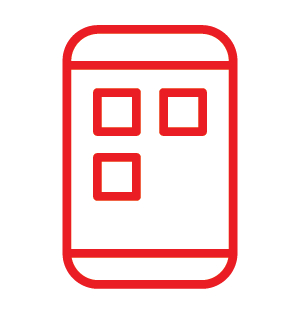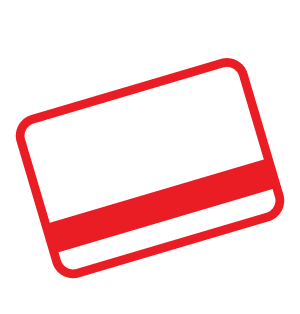How To Avoid Banking Fees And Keep Your Money Safe
What you need to know about prepaid debit cards, payment apps, and banking right now.

Today, there’s more choices than ever for how to manage your money, whether you’re paying a bill, buying groceries, or cashing your paycheck or social security check.
When you’re living on a tight budget, it’s common to pay for the banking services you need piecemeal, incurring a charge every time you cash a check or pay a bill. But relying on a prepaid debit card or payment app can make the fees add up. Plus, these bank-alternatives come with far more risk than traditional checking and saving accounts, putting your hard-earned money in jeopardy.
To help you avoid unnecessary fees and keep your money safe, here’s what you need to know about banking accounts and their alternatives today.
How to pay fewer fees on your bank account
You may think that having a bank account is too costly. But unlike prepaid debit cards, most banks offer a set number of transactions — like paying bills with a check or using your debit card for a payment — as part of your monthly fee.
Oftentimes, that monthly fee is waived entirely when you are able to keep a certain amount in your account each month. So you could get enough transactions to cover your basic banking needs without having to pay any fees.
Let’s say your bank charges you $12 a month for a basic checking account with up to 10 transactions a month and you go below the balance about half of the time. Because the fee is only charged when the balance dips below the minimum, you’ll only be charged $72 for an entire year of banking. Is that more or less than what you’re paying in fees right now?
To determine if this figure is better or worse for your situation, add up how much you pay on every single transaction, including cashing checks, making payments, making purchases, reloading prepaid debit cards, and sending money to friends.
Consider the fees on and risks to your money
Take advantage of technology to avoid fees
Banks offer ways to avoid those hefty overdraft fees — when a payment is made without enough funds to cover the amount in your account. You can set up notifications within your online bank account so you know when a balance is getting low and you need to transfer funds into your checking account. You can also sign up for overdraft protection, which automatically pulls money from your savings account to cover the charge for far less than an overdraft fee.
Other ways to save on banking include:
- Switch to online bill paying and stop paying for paper checks and stamps
- Explore discounts for senior bank accounts or having more than one account at the bank
- Sign up for direct deposit for paychecks and social security payments
Why a bank account is a safe, smart choice
One of the most important reasons to have a bank account is that the FDIC — an independent agency of the United States Government —protects you against the loss of your insured deposits if an insured bank fails. The same can’t be said for payment apps and prepaid debit cards.
Always read the fine print carefully. Not every payment platform or prepaid card is the same, so you need to be careful before you sign up and use them to take care of your banking needs. Prepaid cards especially don’t always cover it being lost or stolen.
Most importantly, using a bank account will help you establish a credit history, which will give you the ability to apply for lower-interest credit cards and loans. Many banks offer personal loans to established customers in need of emergency cash at interest rates far lower than payday loans and cash advances.
Frequently Asked Questions
What is FDIC deposit insurance?
FDIC deposit insurance protects bank customers in the event that an FDIC-insured depository institution fails. Bank customers don’t need to purchase deposit insurance; it is automatic for any deposit account opened at an FDIC-insured bank. Deposits are insured up to at least $250,000 per depositor, per FDIC-insured bank, per ownership category.
How do I find out if a bank is FDIC-insured?
To determine if a bank is FDIC-insured, you can ask a bank representative, look for the FDIC sign at your bank, or you can use the FDIC’s BankFind tool. BankFind allows you to access detailed information about all FDIC-insured institutions, including branch locations, the bank’s official website, the current operating status of your bank, and the regulator to contact for additional information and assistance.
Is every financial product at a bank covered by the FDIC?
No. FDIC deposit insurance only covers certain deposit products, such as checking and savings accounts, money market deposit accounts (MMDAs), and certificates of deposit (CDs). Investment products that are not deposits, such as mutual funds, annuities, life insurance policies and stocks and bonds, are not covered by FDIC deposit insurance.
Stay in the Know
Get practical tips and free support – from help finding work to lowering your bills — when you subscribe to email updates from AARP Foundation.



